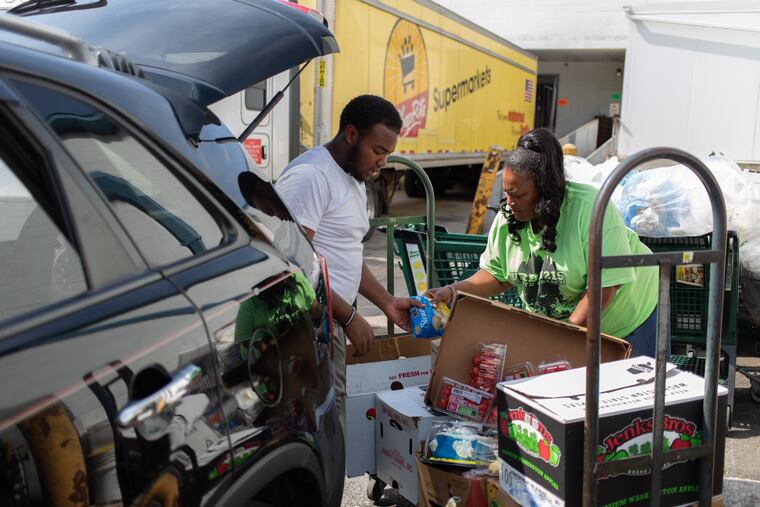Groceries delivered with SNAP benefits? Not in Pa., N.J., or most states.
Grocery delivery has become more than a convenience in the era of coronavirus, but SNAP recipients in 45 states, including Pennsylvania and New Jersey, can't use their benefits online.

Until a few weeks ago, grocery delivery services seemed like a convenience. But as the number of confirmed cases of COVID-19 grows, delivery has become a crucial way to reduce one’s risk of exposure to infection — especially for high-risk populations like the elderly and the immuno-compromised.
But for those who rely on Supplemental Nutrition Assistance Program (SNAP) benefits to purchase groceries, delivery is rarely an option. SNAP credit is only accepted for grocery delivery on certain sites in just five states, applying to a small fraction of the 36 million people enrolled in the program nationally.
A U.S. Department of Agriculture pilot program launched in 2019 enabled SNAP recipients to use food stamps for online orders, but the program only extends to a handful of retailers, and only to recipients who live in Alabama, Iowa, New York, Oregon, and Washington state. Amazon, FreshDirect, ShopRite, and Walmart are the only retailers with a presence in the Philadelphia region that accept SNAP benefits elsewhere.
On Wednesday, Pennsylvania Democratic Sen. Bob Casey — having heard from a high-risk constituent receiving food stamps who is unable to leave the house to shop for groceries — wrote to grocery and retail associations, including the Pennsylvania Food Manufacturers Association, urging them to accept SNAP for delivery immediately. (Per the USDA pilot, benefits can’t be applied to delivery or service fees, many of which have been waived during the shutdown.)
“It can be done by processing the EBT card either at the time of pickup from the store," or by using a mobile payment processing system at the time of delivery, the letter from Casey read.
He also wrote to the USDA asking for backup in encouraging retailers to make their policies flexible, acknowledging the pilot couldn’t be made national all at once.
In 2017, about 1.8 million Pennsylvanians received SNAP benefits, including roughly 20% of constituents in Philadelphia’s then-congressional districts (the map was redrawn in 2018). Statewide, more than half of the households receiving benefits had a disabled individual, and about 37% had one or more people 60 years and over.
For Philadelphia SNAP recipients who are also high-risk, grocery delivery can be all the more important, given the uneven distribution of stores with a deep supply of produce, such as supermarkets, big box stores, and produce stores. According to the city’s 2019 analysis of neighborhood food retail, high-produce stores are overwhelmingly concentrated in Center City, University City, West Mount Airy, Chestnut Hill, and Upper Roxborough.